How To Draw A Realistic Monster Holding 2 Axes
In my concluding 2 manufactures, nosotros looked at how surface texture affects values and at ways to enhance contrast past pushing value ranges to their limit. This calendar week, we'll put those two things together in a single drawing.
Here is the reference photo of the object I'll be drawing today. It'south an former-fashioned hitching postal service for horses, made of stone and cement with lots of great texture and roughness.
Quick announcement - EmptyEasel has created a quicker, easier way for artists to have their own fine art website. Click here to learn more and get a simple art website of your own!

Before I dove into texture or color or anything else, I started with a precise drawing that shows the edges of shadows, reflected light, and a few larger details. Here it is:
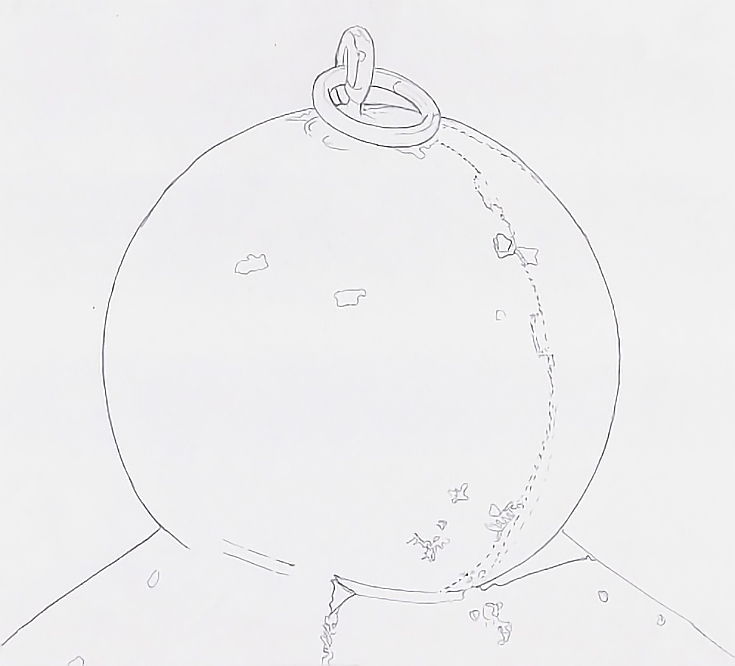
No matter what object you're drawing, brand sure to begin with a similar outline. This will be your guide throughout the drawing.
Stride 1: Lay downward a base color
Work begins with a base of operations color. I used Foam in the warm sunlit areas, Rosy Biscuit in the cool sunlit areas, Dirt Rose in the lighter shadows, and Black Cherry in the darker shadows and the atomic number 26 ring. In each area, I used very calorie-free pressure and loose, open strokes following the contour of the shape. I overlapped the colors enough to continue edges from appearing.
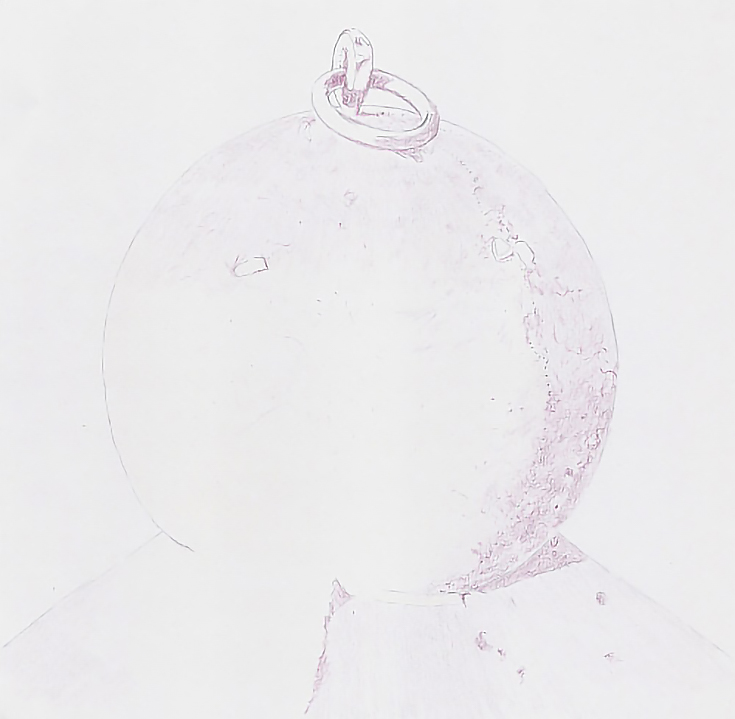
For subsequent layers, I suited the stroke to the area, but continued to use light pressure. In the darkest shadow, I used more precise strokes, but overlapped the strokes randomly to begin creating the coarse surface.
In the lighter shadows and cooler highlights, I used a combination of randomly placed, crosshatching strokes and followed up with a few squiggly strokes and stippling to add together details. In the warm highlights, I used squiggly strokes and stippling to add Rosy Beige and Clay Rose accents.
I used Black Reddish with low-cal pressure and directional strokes placed close together to describe the shadows and give shape to the ring.
Stride ii: Add your basic texture
Constitute texture played a major office in the side by side step. I swept the front end walk, placed my paper on it, and then used Bronze to stroke the paper. I stroked from right to left to make darker color on the shadowed side of the "hilly texture" throughout the globe.
On the shadowed side of the globe, I used slightly heavier pressure, multiple layers, or both to make darker values. In the middle tones and lighted sides, I used lighter pressure level, fewer layers, or both.
Because the texture on the globe should be the well-nigh distinct where shadows and centre tones come across, I made the constitute texture more distinct in that expanse.

When I was satisfied, I moved inside over again and connected layering Bronze over the cartoon. Again, I used slightly heavier pressure or more layers to darken the shadows.
Throughout the drawing, I used short directional strokes that didn't overlap very much to go on building the illusion of a rough and pitted surface. In some areas, I preserved highlights on the lighted rims of pits.
I worked around the full general area of the highlight with low-cal pressure and open, directional strokes. There is no clear edge to the highlight, but in that location is an area that is generally lighter than the surrounding middle tones.
Stride 3: Add some warm and cool shadows
I used a blunted pencil tip to glaze Black Cherry over the base shadows with long, parallel strokes. Then I added darker accents and darkened the adumbral side of some of the surface texture to emphasize the coarseness of the base.
On the globe, I used short, hatching and crosshatching strokes applied with the apartment side of the pencil tip to glaze Black Reddish into the grade shadow and then added darker shadows and accents throughout the shadow.
Finally, I used the abrupt edge of the pencil tip to glaze Black Red into the shadows on the ring and post.
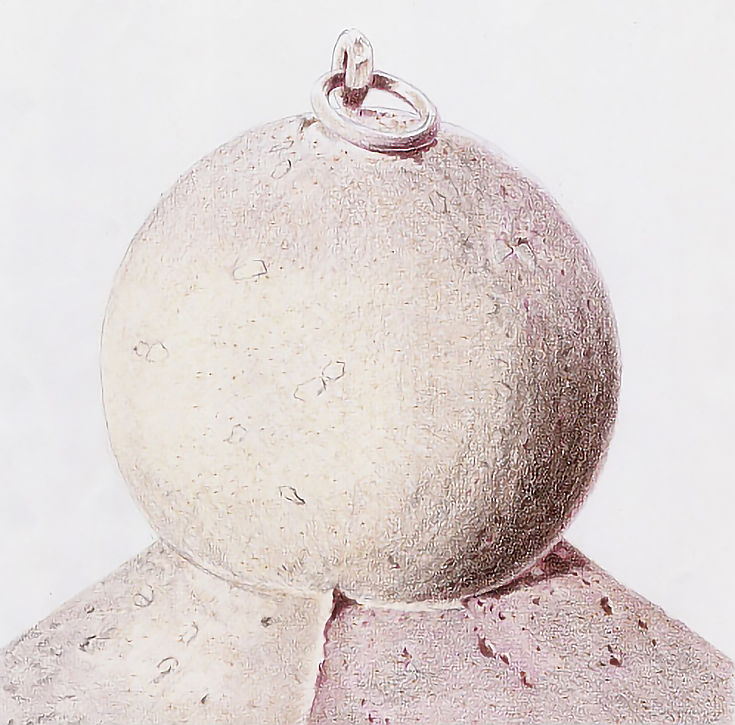
Next, I added Sepia to the cast shadows, working around some of the surface features and darkening some of the pits. I used medium pressure for most of this work.
I also glazed Sepia with light pressure and the side of the pencil into the sunny side of the base and the middle tones on the globe. For the ring and postal service, I used the tip of the pencil and medium force per unit area. In the globe, I drew a few more surface details to emphasize the texture.
Then I glazed Rosy Beige into the lighter shadows on the sunlit side of the base, and followed that with a glaze of Foam over everything only the ring and post. I used the tip of the pencil, simply didn't sharpen information technology commencement. The bluntness of the pencil helped me "skip" color over the paper and create farther texture.
I then used the same method to glaze Rosy Biscuit over the top of the globe and Clay Rose over the lower one-half of the shadowed side.
Step 4: Develop additional value and colour
I began developing values by calculation Dirt Rose, Slate Gray, and Sepia to the background. All colors were practical using the tips of sharpened pencils and horizontal strokes.
I darkened shadows with Indigo Blue practical carefully effectually the surface features. I added pits and stones within the shadows but likewise emphasized the irregular edge of the form shadow by adding pits and stones along that edge.
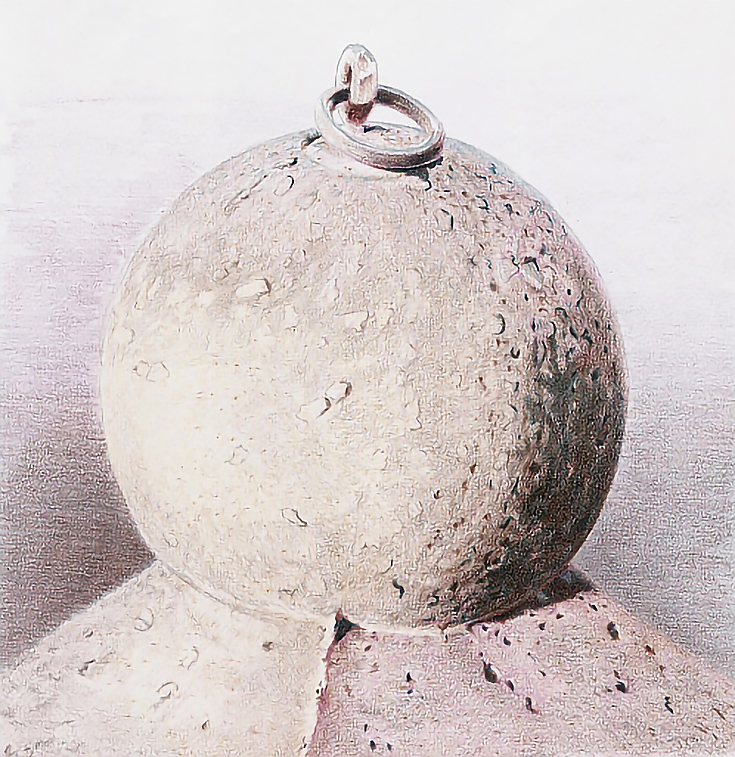
Then, because there is a lighter shadow above and to the right of the dark shadow, I switched to Sepia and used a sharp pencil to work around the surface details within the shadow and along its edges. I also layered Sepia over the Indigo Blue.
For both colors, I used medium to medium-heavy force per unit area.
Next, I applied Slate Blueish and Rosy Biscuit into the reflected calorie-free areas. Finally, I glazed Dark Brown over the center tones around the highlight area using the side of the pencil and very light pressure.
Footstep 5: Push your value contrasts
I continued building contrast and shape past layering the various colors over the globe. Simply I also layered Sand over all of the globe and base. I did i layer over the lighted areas with the paper lying on the front walk to pick up texture. The next layer was applied in a more traditional mode, with closely spaced strokes to even out the texture.
I followed up with Statuary throughout the earth, but worked around some of the stones embedded in the surface. I burnished the stones with Foam, so with White before glazing Rosy Beige into the cool lighted area, Clay Rose into the cool shadowed area, and Dark Brown over all of the shadows. In the groundwork, I layered Mediterranean Blue to reduce the brownness.
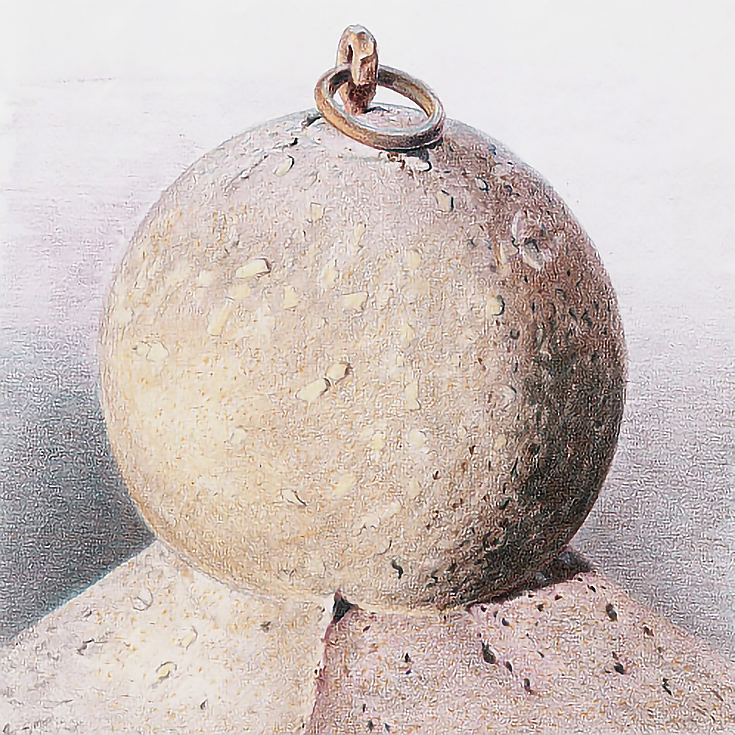
I drew the band with Cherry Ochre, Dark Brownish, Sand, and White, using slightly heavier pressure with each layer. The highlights were burnished with Sand and then white.
For reflected low-cal on the band, post, and stone, I added Sky Bluish Calorie-free with medium-heavy or heavy force per unit area later on a coat of Slate Gray.
Depending on the type of work you do and your subject, y'all might wish to push the value range even farther or add more than surface detail—that'due south entirely upwardly to you.
Proficient luck and happy drawing!

Annotation: You may likewise be interested in EE's step-past-step drawing guide for artists. Click below to acquire more than!
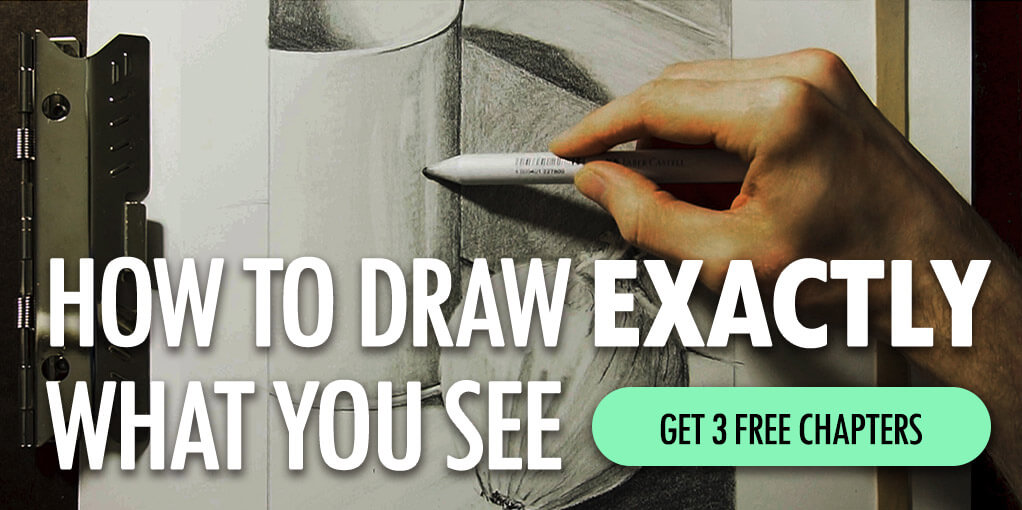
This post may comprise affiliate links.
Source: https://emptyeasel.com/2014/01/02/how-to-draw-realistic-rough-stones-and-cement-objects-in-colored-pencil/
Posted by: littletonhiming62.blogspot.com


0 Response to "How To Draw A Realistic Monster Holding 2 Axes"
Post a Comment